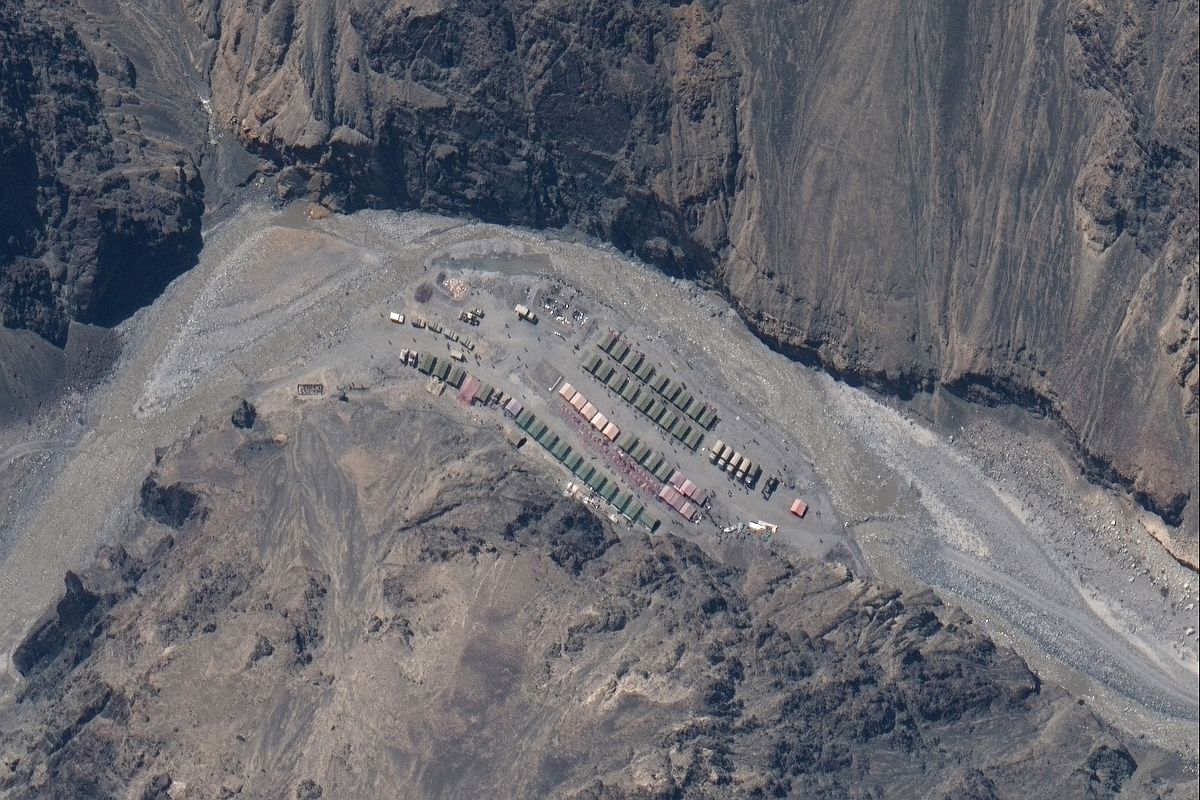Defying the agreed mutual consensus to disengage, Chinese People’s Liberation Army troops have returned to Patrolling Post 14 on the Line of Actual Control in Galwan valley in eastern Ladakh where the unprecedented violent June 15 face-off, in which 20 Indian Army soldiers were killed, occurred.
The PLA has even reportedly set up tents and an observation point exactly where it was on June 15, sources quoted by IANS said, adding that the Chinese have returned with huge reinforcements even after they have agreed to withdraw their troops and dismantle their setups.
This comes even as the Army on Tuesday informed that the Corps Commander-level talks between India and China on Monday were held in a “cordial, positive and constructive atmosphere.”
It was also informed that there was “mutual consensus to disengage” along the Line of Actual Control during the senior military-level meeting held at Moldo on the Chinese side of LAC opposite Chushul.
The modalities for disengagement from all friction areas in eastern Ladakh were also discussed and will be taken forward by both the sides, the Indian Army sources had stated.
The high-level military talk, held to resolve the border issue and ease tension in eastern Ladakh, comes even as over thousands of Indian Armymen stood a few meters away from LAC against Chinese People’s Liberation Army.
This was the second such meeting after the first one on June 6 happened to defuse the tensions.
The meeting between 14 Corps commander Lieutenant General Harinder Singh and South Xinjiang Military District chief Major General Liu Lin happened on the lines of the one they held at the Chushul-Moldo border personnel meeting (BPM) point in eastern Ladakh on June 6.
However, Chinese Army troops were back at the same location where the conflict took place, the same way they had done after the June 6 talks, further leading to the clash at Galwan valley in eastern Ladakh.
The Chinese Army deployment is a major concern for the Indian government, but the forces in Eastern Ladakh are ready for any conflict, sources said.
An unprecedented violent clash took place in Galwan valley on the night of June 15 at the Line of Actual Control with Chinese People’s Liberation Army soldiers attacking a small group of Indian Army men on patrol, resulting in fatalities which included the commanding officer of the Indian Army.
The intensity of the fight increased with reinforcements from the both sides and it continued until late night till the time they got exhausted. Many Indian soldiers went missing during the fight.
According to an AFP report, the soldiers were not shot but were killed in hand-to-hand combat on Indian territory. The soldiers threw punches and stones at each other and the Chinese troops allegedly used rods and nail-studded clubs during the fight that lasted for hours until midnight on Monday.
Meanwhile, the latest development comes as both the countries resolved to “expeditiously” implement the understanding reached between senior military commanders of the two countries on 6 June on disengagement and de-escalation in Eastern Ladakh at the end of a three-hour meeting of the India-China Working Mechanism for Consultation and Coordination (WMCC) on border affairs held through video-conference.
The two countries agreed that implementation of this understanding, in accordance with the bilateral agreements and protocols, would help ensure peace and tranquility in border areas and the development of broader relationship between them.
This was the 15th meeting of the WMCC at which the Indian side was led by Naveen Sinha, Joint Secretary (East Asia) in the External Affairs Ministry while the Chinese delegation was led by Wu Jianghao, Director General (Boundary and Oceanic Affairs) at the Chinese Foreign Ministry.
After the June 15 violent clash, nothing seems to have changed and things continue to be tense in Galwan and Pangong Tso region.
In the midst of the growing tension, India is exploring all possible military options as a response if the Chinese aggression continues.











